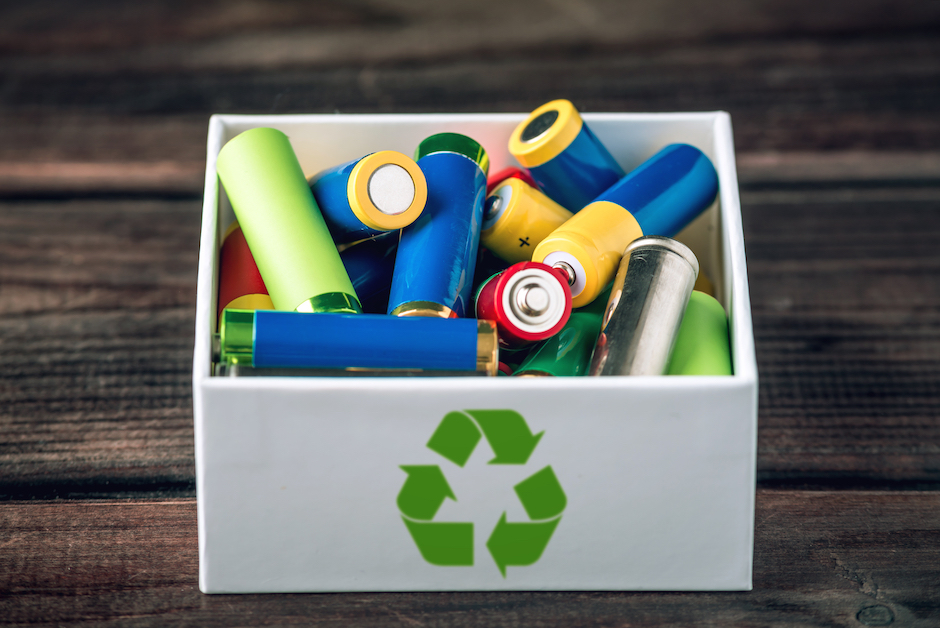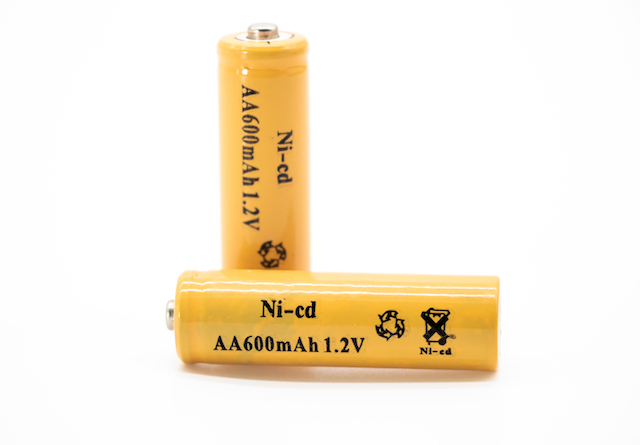You Can’t Buy Nickel-Cadmium AA Batteries in the EU
Sustainability
August 31. 2022
3 min.
Right now, there are on average ten used batteries in every household in the European Union. This adds up to tens of millions of batteries which often do not end up in recycling centres, but in landfills and incinerators.

Batteries are hazardous waste, and they should be treated as such. They routinely contain dangerous elements, such as mercury, cadmium and lead, which are a risk to the environment and to human health when burned or landfilled. A battery in a landfill takes between 200 and 500 years to decompose, and it can release dangerous heavy metals into the soil and water.
There are differences among industrial batteries, car batteries, and portable batteries for home use. Industrial batteries and accumulators are easy to track, which includes their collection. For example, industrial cadmium batteries are subject to very specific recycling requirements which ensure that a high percentage of their waste material is used effectively. This is because using recycled cadmium and nickel requires less primary energy than mining and refining metal ores – by 46% and 75%, respectively. You can find out more about the recycling of Ni-Cd batteries in this article.


Recovering battery cells from ordinary consumers is much more difficult. These are, for example, all single cell batteries (AAAA to D), button cells and rectangular batteries. Even though the situation with recovering used batteries has been improving, only about a third of portable batteries in circulation is eventually recycled or reprocessed.
That is why the European Parliament together with the Council of the European Union issued the directive 2006/66/EC on batteries and accumulators and waste batteries and accumulators. Its aim is to help protect, maintain and improve the quality of the environment. The directive also ensures smooth functioning of the internal market by harmonising the requirements for introducing batteries and accumulators.
In order to achieve all the set environmental goals, the directive, among other things, bans certain batteries and accumulators from the market, precisely because they are difficult to recover. This applies e.g. to portable batteries and accumulators in which more than 0.002% of the weight is made up of cadmium; this includes batteries and accumulators built into devices. And that is why you can’t buy nickel-cadmium AA batteries in Member States of the EU.
Generally speaking, the directive aims to ensure that batteries are manufactured and sold on the market in a sustainable and responsible manner. They should also be energy-effective and designed for long durability. Used batteries should be properly collected and recycled, and the valuable materials that they contain should be returned to circulation and used efficiently. In order to collect used batteries successfully, end users must be informed about the importance of waste sorting, about current collection systems and their role as end users in the handling of used batteries and accumulators.
Among other things, the EU has adopted an implementing regulation for a labelling system that gives end users clearly readable information about each battery and accumulator and their content of heavy metals. In terms of manufacturer responsibility, the manufacturers of batteries and accumulators and of other products that have a built-in battery or accumulator are responsible for the waste related to the batteries and accumulators that they introduce on the market.
By 2030, the European Union wishes to achieve a 70% success rate in the collection and recycling of all portable batteries and to pass a full ban on landfilling batteries.
Sources:
– DIRECTIVE 2006/66/EC OF THE EUROPEAN PARLIAMENT AND OF THE COUNCIL of 6 September 2006 on batteries and accumulators and waste batteries [online]. Available at: https://eur-lex.europa.eu/legal-content/EN/TXT/PDF/?uri=CELEX:02006L0066-20131230&rid=1
– EUROPEAN COMMISSION DIRECTORATE-GENERAL ENVIRONMENT. Frequently Asked Questions on Directive 2006/66/EU on Batteries and Accumulators and Waste Batteries and Accumulators: (Updated version, May 2014) [online]. Available at: https://ec.europa.eu/environment/pdf/waste/batteries/faq.pdf
– Batteries and accumulators [online]. Available at: https://environment.ec.europa.eu/topics/waste-and-recycling/batteries-and-accumulators_en
– Green Deal: Sustainable batteries for a circular and climate neutral economy. In: European Commission [online]. 10. 12. 2020. Available at: https://ec.europa.eu/commission/presscorner/detail/en/ip_20_2312
– BATERIE A AKUMULÁTORY: Jak třídit baterie, jak se recyklují baterie. Třídění odpadu CZ [online]. [cit. 2022-07-07]. Available at: https://www.trideniodpadu.cz/baterie
Podobné články
Closing the Circle: EU’s new Battery Regulation goes Further than any Other
November 3. 2023
3 min.
VíceLi-Ion Cells Are Difficult to Recycle. And It’s a Bigger Problem Than You Think
May 10. 2023
2 min.
VíceRecycling Ni-Cd batteries
October 10. 2022
2 min.
Více



